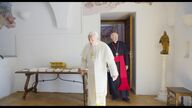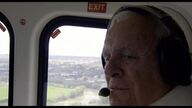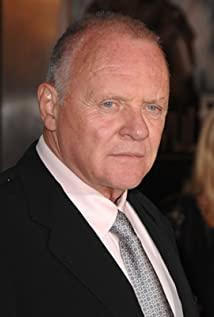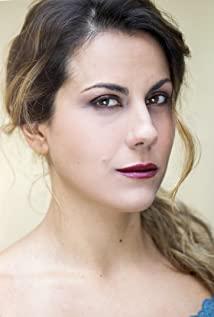Before we start, let's list the following word pairs along the lines of some dichotomy:
sacred/secular
conservative/improved
center/edge
eternity/flow
silence/dialogue
absolute/relative
Inspiration / Manifestation
Finding concepts between these words is difficult and vague. Is it then possible to find things beyond the contradictions inherent in them? The Pope's succession demonstrates one of Merrill's understandings.
Francis is not a prominent Christian name. For most moviegoers, only St. Francis of Assisi and St. Francis Xavier, one of the founders of the Jesuit order, may be familiar with them. The film opens with the former story paired with a light tracking long shot, a dilapidated church, and rough paint, but the lively colors of icons and graffiti take away the seriousness. Francis' story comes to an abrupt end before he has grasped the true meaning of building a church, and the camera diffuses over a clearing after passing through a corridor: Bergoglio, who has not yet become San Franciscan, appears, he preaching. The friendly tone, the mate tea received from the faithful, all show his easy-going; It is natural to think of Francis Xavier who preached in the villages of Goa more than 400 years ago. In fact, as suggested by Bergoglio's choice of the name, his resemblance to the other two San Franciscans is shown throughout the film.
"The huge statue said to the saint: "Rebuild my temple! For it is about to fall."
St. Francis of Assisi abandoned the path of chivalry and received a sign in the Church of St. Damien. Before that, he had called himself "herald of the great king", so we can take this as a sign of promise. Bergoglio's memories before becoming a priest use black and white images. Does the director want to show us a sense of temporal distance and a pallor of lack of faith?
"I waited for a sign...but the sign never came. I promised the Lord that I would leave this life when the sign came."
So Bergoglio, who confessed in a confessional, also got his sign, as if the rest of the day he and the priest were preparing for this moment, becoming a kind of vacancy in presence. Behind the pane, he freezes on those pleading eyes, and the picture enters a long silence. It wasn't until in church that the voices and colors reappeared, returning the routine to the audience and letting us know that faith had gone where he was going. The Lord prefers to show miracles to pagans and atheists, as if miracles are the best way to spread faith and deterrence, and signs to those who already believe are more self-evident.
"Ask the LORD your God to show you a sign! The sign may be as deep as the earth or as high as the sky." (Is 7:9,10)
"I do not ask, I do not put the Lord to the test." (Is 7:12)
We therefore naturally feel Bergoglio is more of a doomed believer. His attitude among the poor, his attitude towards "whether the church should be married to the present", his religious views seem to be in tacit agreement with Fromm; he is more adept at devoting himself to rituals and scriptures than in the church Be a Jonah-like figure. The image of Bergoglio in the film can be divided into three parts: the immature youth - the Jesuit priest with glasses - the cardinal with white hair. The director narrates the story of the second paragraph in the form of a pseudo-documentary: Bergoglio's identity before and after the Dirty War, and shows his theological maturity in an implicit way.
As provincial president of the Jesuits in Argentina, his Fr Jorio and Fr Yaric chose to move to the slums of Buenos Aires during the most brutal period of the junta's oppression of the poor, where the establishment of Community; the film's somber tones and oppressive music beckon a series of dilemmas of choice. The bottom line is that supporting their work would cause catastrophe for the entire church, but abandoning them would be announcing their death. However, if the former is chosen, is it a foolish shortsight to protect the poor when Rome also believes that the group of these two priests should be dissolved? Is it surrender and betrayal to abandon them? This unavoidable pain afflicted Bergoglio in a passive way, his proposal was rejected by two priests, and the society, which had lost its Jesuit status, was quickly captured and abused by the military regime. The director's ingenious point is not only to let us look at Bergoglio with sympathy from beginning to end, almost similar to Christ's forgiveness of Peter who denied him; but also to show the suffering of the poor in moderation, with indirect contrast To deliver the hidden voice: Bergoglio was watching a tennis match smiling when he went to see the general. Tennis matches and torture, TV sets and blindfolds, Jesuit priests and murderers. Eventually, as we had foreseen when we saw the agony of Bergoglio leaving their camp, the victims were thrown into the sea, floated ashore like dead pigs, and disposed of like dead pigs: "The Shore The guards were simply overwhelmed."
In this episode, we naturally think of Endo Shusaku's silence. Did Bergoglio make the right choice? The movie doesn't tell us whether he heard the voice of Christ at that time, and in fact he didn't have the chance to save the victims like Rodriguez did. When persecutors talk and laugh, when believers are tortured, where is Christ? The film also asks a similar question through Bergoglio: Why was Christ silent? Did Christ drink tea in the dictator's office while they were crucified? As with the previous understanding of symptoms, the film temporarily suspends this question. In a way, the words of Benedict XVI are at the intersection of these two propositions: "I have not heard the voice of the Lord for a long time... But these days I am sure that he spoke through your mouth ". This conversation is followed by a reconciliation between Bergoglio and Father Yaric, with Jolio still holding a grudge against the former president until his death in 2000. Yet over the decades, Bergoglio became St. Francis; though the dead were irretrievably deceased, he succeeded what Aricci and Jorio did, and also St. Francis of Assisi in the leprosy hospital what has been doing. The director seems to be answering the previous question through the character itself rather than his words: that the silent voice is not heard, and at this point, Bergoglio and Rodriguez of the Apostate make the same choose. From time to time in Bergoglio's flashbacks we see images of him meditating on a hill, a scene strongly suggestive, as if this is Mount Tabor and Christ transfigured where it is not shown Training, the voice only he can hear.
From the earliest prayers for omens, to the torment of the Dirty War, and later reflections on the scandals of the Holy See, the war and the condition of the poor, Bergoglio is always in the midst of anxiety and predicament, and his peaceful expression bears a deep sympathy. Painful emotions; so much so that when we see him many times thinking he can't be Pope, we inevitably wonder: Is he still remorseful for what happened in the Jesuit presidency? After the fall of the military government, Bergoglio, who was almost in exile, had to listen to a large number of the most subtle confessions every day, and the director used overlapping and repeated voices to show us the double torment of these words: he can serve these confessors. make what? Who can he confess to? Pain is certainly expressive enough, but pain alone is not enough to keep an image alive. The director's intention is to show his struggles, even if they are not understood; these episodes let us know that he really responded to these pains, to the silence of Christ. His "existential courage" is what Tillich describes as the ultimate concern.
"A wicked and adulterous generation asks to see a sign. No sign is shown to them except that of the prophet Jonah." (Matthew 12:39)
Although the title of the film is The Pope's Succession/Two Popes, the film's portrayal of Benedict XVI is more reflective than Bergoglio. The director uses a lot of contrasting structures, from music to pictures. After Ratzinger was elected, he meticulously followed the rituals and put on his laces. Then he slowly greeted the believers with fisherman's shoes and a ring of authority. He even used a bronze cap to extinguish the candle; ". In the almost symmetrical part of Bergoglio's election, the director deliberately shows that he doesn't care about these things, which is already explained in the middle of the film when he goes to Gondolver Castle to meet the Pope. The official meeting of the two popes began with Bergoglio's planned resignation, at a time when a series of scandals, including pedophilia and corruption, had rattled the Holy See, and the director was apparently suggesting some kind of independence for Bergoglio. In fact, rather than really wanting to resign, protest may be the main purpose. The omens of this part are also playful: the smoke wafting down, the flight tickets already booked, just as Ratzinger treats the ABBA song as an anthem.
Audiences are far less aware of Benedict XVI: his attitudes towards red, fluttering, clergy marriages are too far from us, and it seems that Bergoglio has long since abandoned these notions of "backwardness"; Nazis, etc. Words surround him so that we can see the German "Danke" in the background when the abdication is finally announced. The exchange between the two in the castle, more in the later episodes, shows us Bergoglio's influence on Benedict XVI: ABBA and Tango replaced Debussy and Smetana (actually, The "lullaby" played by Benedict XVI was composed by Hopkins himself, and the Pope himself favored Baroque like Bach and Mozart), football replaced piano, pizza and coffee replaced those formal foods. The Pope's own abdication is also seen in the film because Benedict XVI himself chose Bergoglio's beliefs. We see Benedict XVI, a pope who has been covering up paedophiles since Fr Hülemann in 1980, and a pope who pedds "eternal truth". And the only possible reason why we understand or like him is that he finally recognized the need for change, or was infected by Bergoglio; and the affinity and ordinaryness that he showed when we watched the game together at the end. Just like Bergoglio led the congregation to pray to the abdicated Benedict XVI when he was elected, the director has secretly mobilized our emotions but has pre-positioned the inclination. Although this method is effective, it is not very clever. This completely unbalanced structure is also the film's failing.
Returning to the original dichotomy, has Merrill found a transcendent answer? It seems that there is, but it is almost unilaterally reflected in Bergoglio. Benedict XVI is like the priest behind the pane of the church in Buenos Aires more than sixty years ago, a passage, like the right hand in the calling of St. Matthew in Caravaggio: come, The Lord has foreshadowed.
View more about The Two Popes reviews










